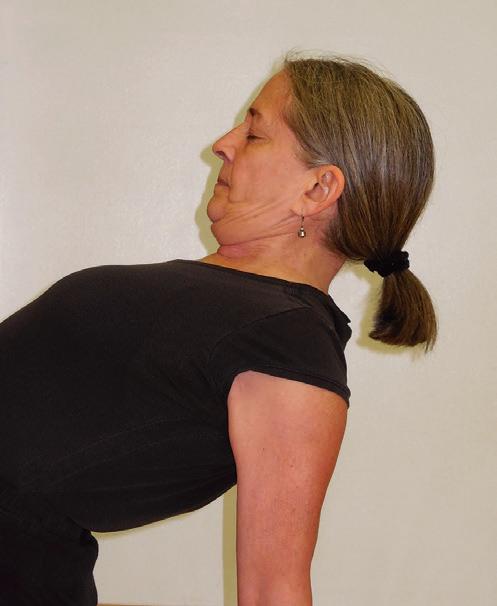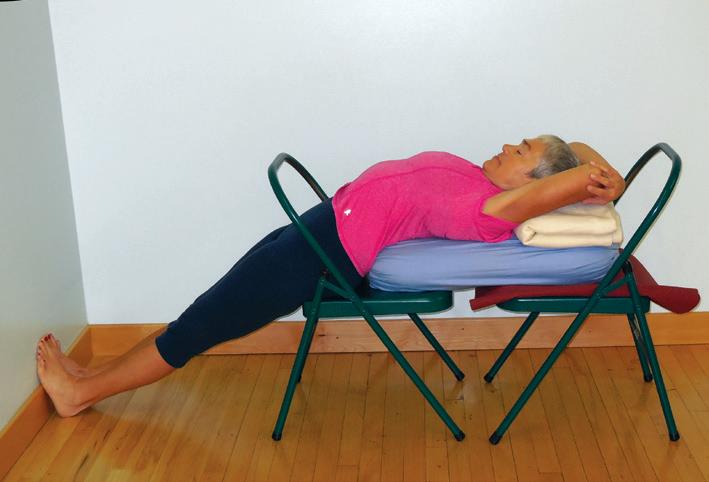
4 minute read
Ask the Yogi : Help for Headaches – Chris Saudek
from Yoga Samachar FW2014
by IYNAUS
Help for Headaches
“What poses are safe to do during a migraine? Can you recommend preventive poses? Sometimes during backbends my neck feels compressed when it is tilted backward. Are backbends harmful for people who have migraines or neck pain?”—Kelly Sobanski , Bloomington, Indiana
Advertisement
The cause of a headache, whether it is classified as a migraine or not, is not always well understood. What we recognize in yoga is that the state of a person’s physical, physiological, mental, emotional, and spiritual health also might have something to do with being prone to headaches. Yoga practice can affect all of these things.
Poses that are safe to do during a migraine are “supta” (lying down) poses such as Supta Virasana, Supta Swastikasana, Supta Baddha Konasana, or chair Purvottanasana, as well as forward bends with head support and Viparita Karani with a small weight on the forehead. The forward bends should be adapted so there is no strain for the practitioner, using as much height as necessary for support. For example, someone with limited flexibility might adapt traditional forward bends to use more support under the head or buttocks or sit in a chair and go forward with the knees bent. The supta poses should emphasize comfortable support for the back and head rather than the backward arch.
In terms of preventive poses for headaches, when a practitioner is not experiencing a headache, a well-balanced practice including all classes of poses is recommended. Poses that might be particularly important for migraine sufferers would include inversions, chest openers with emphasis on the shoulder blades and upper back work, forward bends, and twists. Standing poses and backbends can be very helpful for alignment and chest opening, but they are also more likely to stimulate the nervous system in a way that may cause problems for individuals who get regular headaches. If a practitioner is not particularly careful with alignment, these two classes of poses might also cause tension, possibly contributing to headaches. It is important to note that it is not only the poses but also how the poses are performed that is essential.
All the yoga poses, when practiced correctly, are designed to create balance in all the systems of the body so that the energy flows freely throughout. By “energy,” we are referring to energy as it relates to circulation, respiration, elimination—a balance of muscular tension and relaxation, an electrochemical balance in the brain, etc.
the structural or physiological shape, need to be practiced with particular care by students who have neck pain or suffer from headaches. Structural energy flow problems can be corrected, but backbends are stimulating poses, and some backbends in their classical form may need to be avoided. The compression problem that Kelly is talking about in her question may be because the chest is not open enough before the head is taken backward. One of the most important preparatory backbends in the Iyengar Yoga system is Dwi Pada Viparita Dandasana over a chair. If the practitioner does not take the shoulder blades in enough, coil the spine enough, or come far enough off the chair, the neck may feel compressed and proper circulation is blocked. Correct action must be learned and different head supports also can be tried.
Another good backbend for learning the correct actions of the shoulder blades, chest, neck, and head is Ustrasana, which can be practiced with the ropes at the wall. One way to practice this pose is not to take the head back at all until the pose is complete and the chest well opened. Until a student can maintain the correct action of the spine, shoulder blades, and neck in Dwi Pada Viparita Dandasana over the chair, classical Urdhva Dhanurasana or Dwi Pada is not recommended.
As important as how individual poses are practiced is the sequence of poses that precede and follow the backbends. The poses that precede backbends should extend the spine, open up the chest and front of the hips while those that follow backbends need to release any back tension and bring the nervous system back to a quiet state. The Iyengar Yoga system, with its progression of the different syllabi and its emphasis on sequencing (in learning the poses as well as in a single-class sequence), is an excellent guide to us in our yoga practice.
Chris Saudek (Intermediate Senior III) is the director of The Yoga Place in La Crosse, WI. Francie Ricks (Intermediate Senior III) teaches at the Yoga Place and at the Winona Yoga Center in Winona, MN.
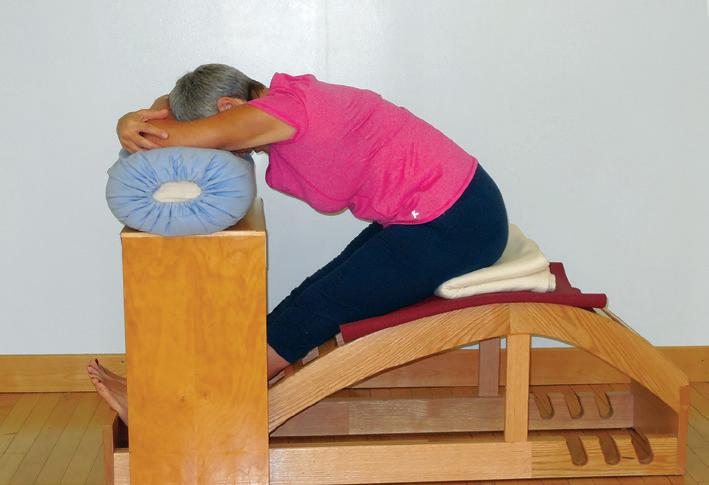
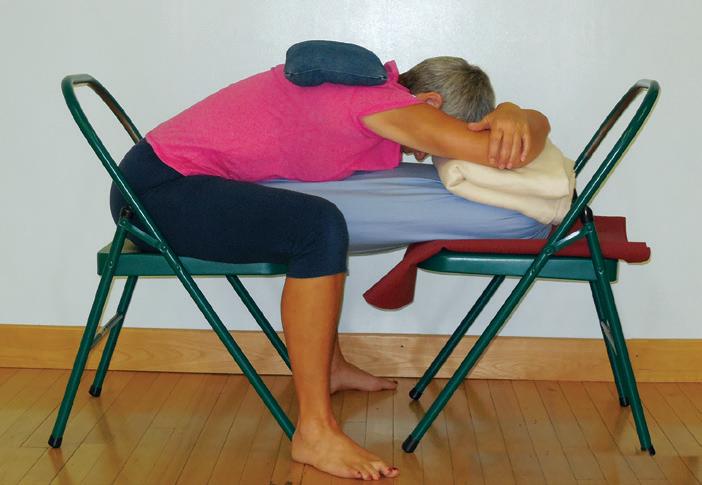

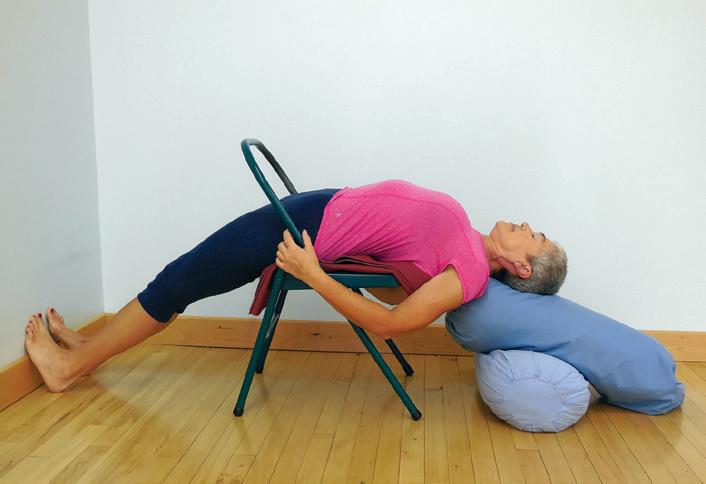
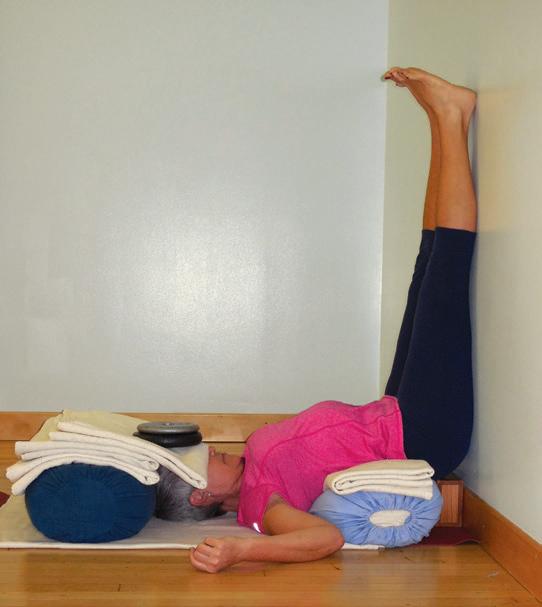
4
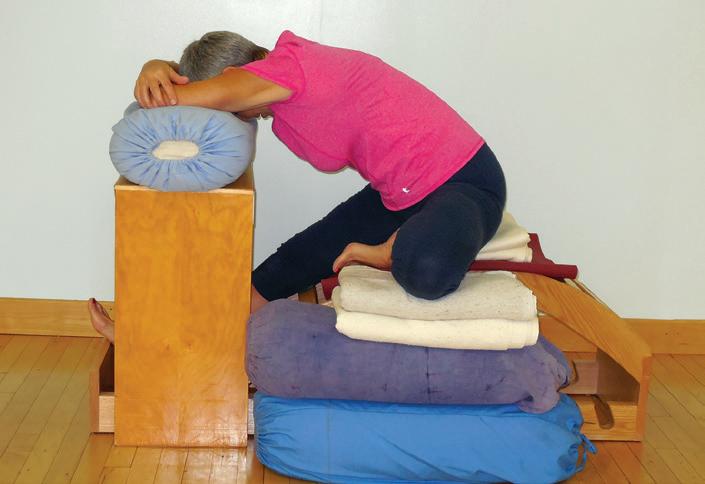
6
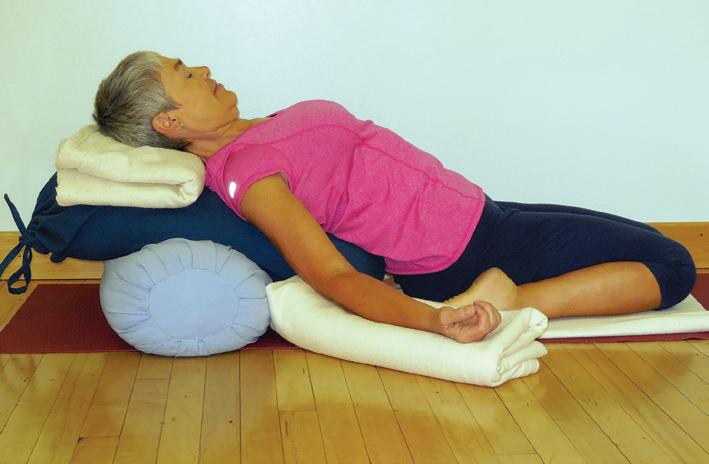
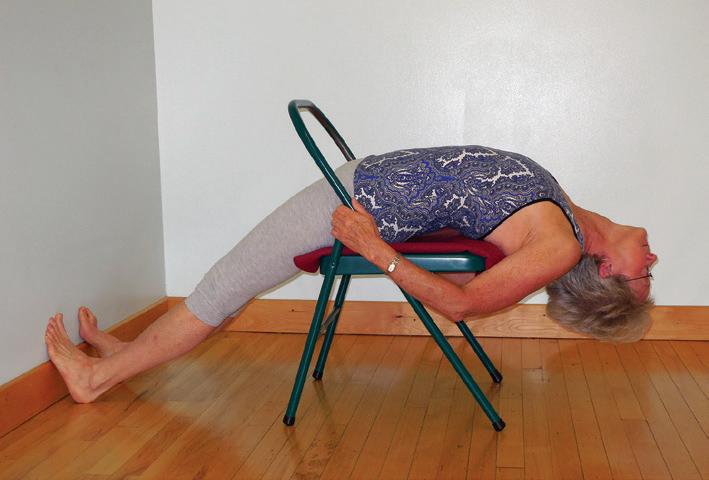
8
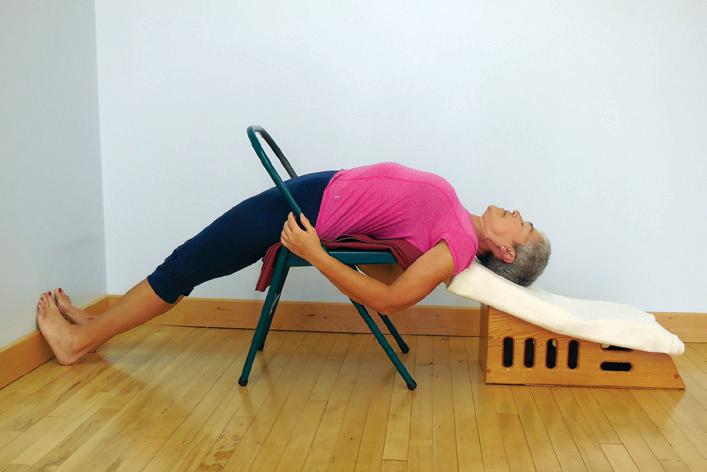
10
Purvottanasana on two chairs
2:
Viparita Karani setup for headaches
3:
Paschimottanasana with extra support for limited flexibility
4:
Janu Sirsasana with extra support for limited flexibility
5:
Chair Pavanmuktasana with sand bag over the shoulders to relieve shoulder and neck tension
6:
Supta Virasana with support
7:
Dwi Pada Viparita Dandasana where the placement on the chair is incorrect
8:
Dwi Pada where the placement and opening is correct
9:
Dwi Pada with head support
10:Dwi Pada with head support
11: Ustrasana without taking the head back
